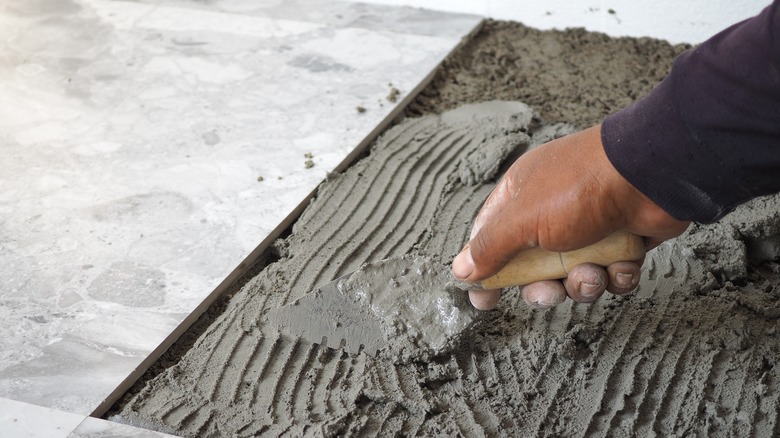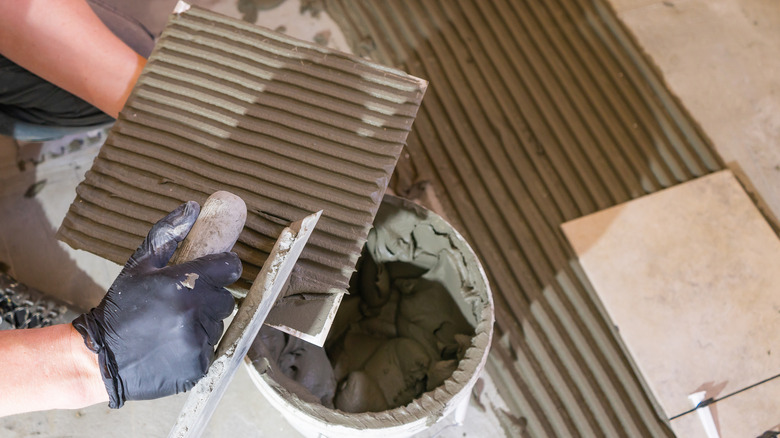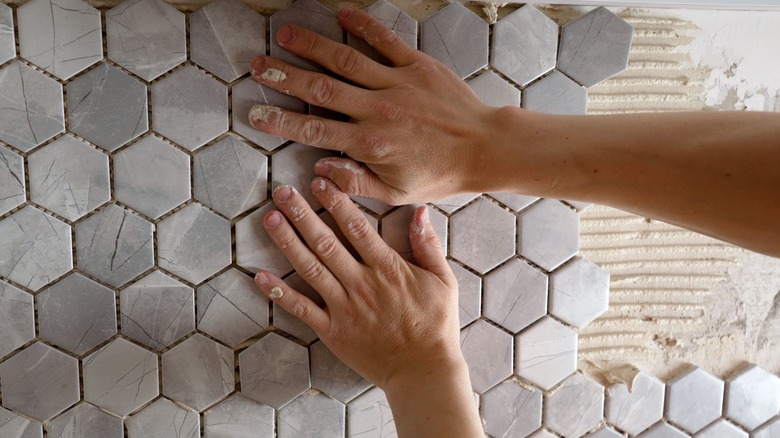How To Choose The Correct Tile Adhesive
Perhaps you've found a beautiful Italian tile you want to use in your kitchen or bathroom. Tiling can sometimes seem like a home improvement project you can do yourself, but to do it well, you have to have the right tile tools and materials (not to mention a careful eye for detail). If you've visited the tile section at your favorite home improvement store, you may already know there are a lot of products to choose from to help hold the tile in place. Which is best?
Making the decision of which to choose can be tricky, says TileBar, but you need to choose tile adhesive based on foot traffic, temperature changes, and the tile itself. It's often best to speak to a professional about those options, too, since many subtypes of adhesives are available that could be a better choice for specific situations. Still, there are some key things you need to know about tile adhesives when deciding on which is the correct one for your project.
There are several types to choose from
In order to choose the correct tile adhesive, first, learn about your options, which Kitchen Infinity says are numerous. This includes thinset (or thin-set) tile mortar, a product that's ideal for ceramic and porcelain tile because it's durable and creates a strong hold. There are two types available, premixed and dry mortar, with premixed being readily available to apply and start laying tile and dry mortar requiring some prep. For areas like sinks, shower stalls, and other areas where the surface is likely to get wet, thinset mortar works well.
Another option is epoxy tile mortar, which works well on surfaces like glass, mosaic tiles, metal tiles, porcelain, and pebbles. This particular type is more water resistant than thinset mortar and can be a good option for outdoor use, too. With this said, BuildDirect notes that this type of mortar is more commonly used by professionals as the cost, mix, and application can prove to be a bit beyond that of a DIY project.
As for situations when you need a very strong bond without being able to press the tile into the mortar, consider using tile mastic, which is super sticky. It's great for installation of floors and kitchen or bathroom countertops where proper leveling is key.
Other factors to keep in mind
When choosing the correct tile adhesive for a project, you should first choose based on the application, as mentioned. For example, an epoxy or thinset mortar is best for tiling your bathroom shower because of the water resistance they offer. There are other factors to think about, too, however, such as the color, says Kitchen Infinity. Choose powdered adhesives when you want more options in color than what is available in premixed products.
Also, per Pepper's Home & Garden, think about the setting time, or the length of time it will take for the adhesive to dry. If you choose something that's fast-setting, you'll need to be skilled enough to move quickly through the project placing and positioning tile, and that could be problematic for those who may make a few mistakes on their first tile project. Some other tile adhesives, meanwhile, require an extensive amount of time to cure and set, which could limit access to the area for several days. When choosing a tile adhesive, find the right balance between each of these products.


